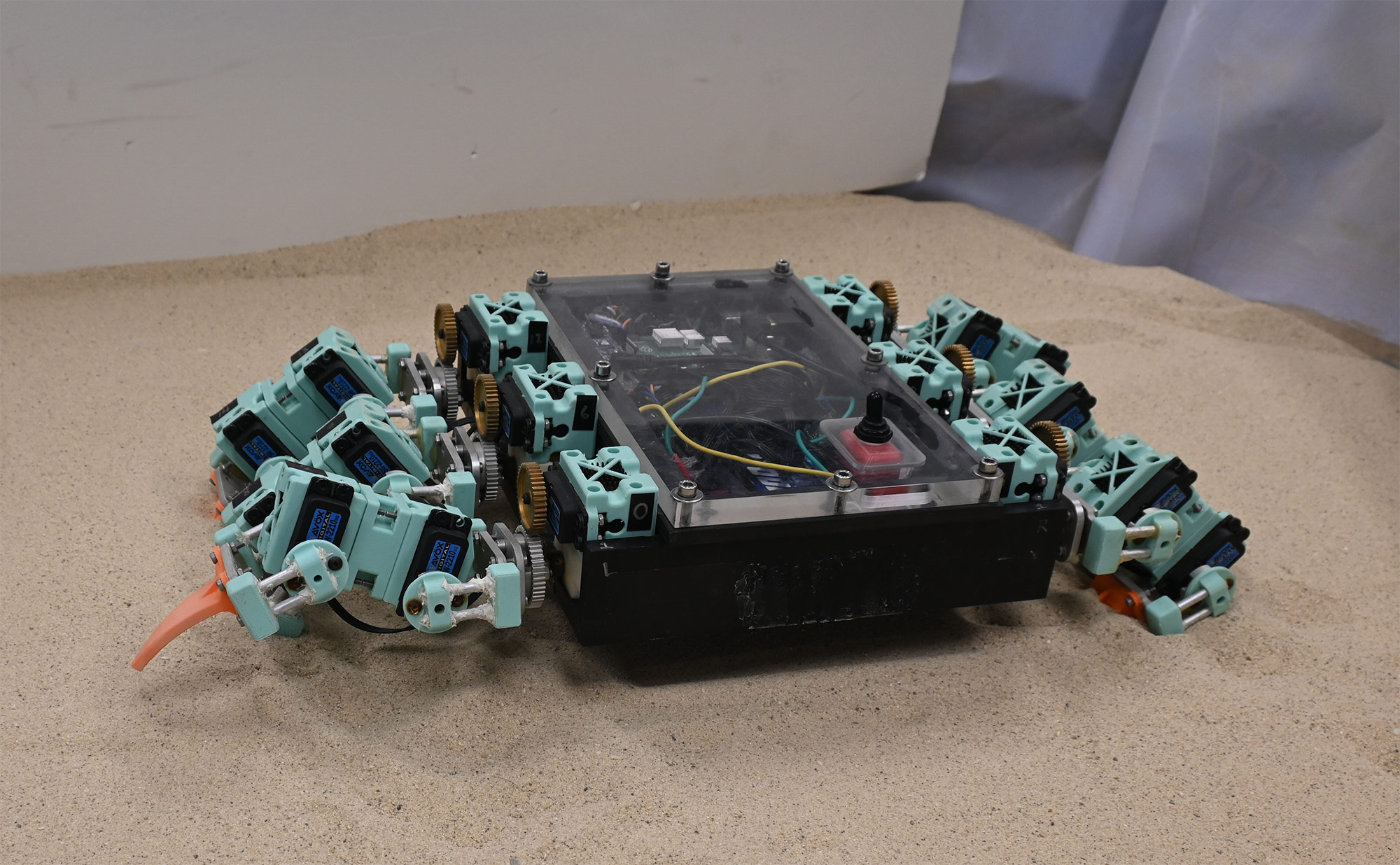lens
Wild Ideas
How animal-inspired robots could help solve problems underwater and underground
 PHOTO: JIANFENG ZHOU
PHOTO: JIANFENG ZHOUKathryn Daltorio would like you to pause for a moment to appreciate the humble crab. It can scuttle lightly across the beach. It can dig its legs into the sand and hold fast underwater as waves sweep past. It can grab, drag and manipulate and, thanks to a dedicated nerve center near its legs, can do it all with split-second, six-limbed agility.
But if you see an unusually large, boxy crab with robin's-egg blue legs picking its way across the shores of Lake Erie, it probably isn't one of nature's inventions: It's one created by Daltorio, PhD (CWR '05; GRS '05, '07, mechanical engineering).
Daltorio, an assistant professor of mechanical and aerospace engineering at Case Western Reserve, designs and builds biologically-inspired robots. The machines in her lab borrow body forms and wiring systems from nature's cleverest innovations. They also take advantage of hundreds of millions of years of evolutionary trial and error, combining it with next-generation polymers, 3D-printed plastics and plenty of computer code. She has crabs, worms, cockroaches—even an aardvark foot.

Kathryn Daltorio
"Introducing other engineers to non-human types of intelligence and nonhuman form factors is fun and inspiring to me," said Daltorio, also co-director of the campus Biologically-Inspired Robotics Lab.
Now, with support from the U.S. Office of Naval Research and the Department of Defense's Strategic Environmental Research and Development Program, she is building crab robots that can find and safely move unexploded ordnance, including bombs, grenades and other explosives that wash up on beaches. These "dud" weapons still have the potential to go off if handled, presenting a danger to unsuspecting beach-goers and specialized clean-up crews alike.
On land, robots are already helping handle unexploded ordnance, but most land-based robots cannot traverse the waves in shallow water. Daltorio thinks that crab robots, which are equally capable in and out of the water, will be able to use their grabby legs to distinguish ordnance from harmless litter and remove it without putting humans in harm's way.
Because Lake Erie has no hazardous ordnance, Daltorio's team tests out the crabs by planting dummy shells in sand. The lake's strong waves resemble what the robots might encounter off the Atlantic and Pacific ocean beaches, where an unexploded ordnance really does sometimes wash ashore.
Daltorio has also co-launched a spinoff company, CrabLine Robotics LLC, to commercialize crab robots for other underwater jobs like cutting apart decommissioned docks, ships and hydropower plants. Today, that work is done by specialized divers wielding metal rods that burn at up to 10,000 degrees Fahrenheit—an expensive, slow and dangerous task. Crabs could do the job more quickly and more economically, she said.
But crabs are just one creature in Daltorio's robotic menagerie. With $2 million from the Department of Energy, she is also building an earthworm-inspired robot to lay power cables under sidewalks and streets.
"Environmental problems are inherently big problems, so as an engineer, I love contributing to solutions, even in small ways with robots inspired by small animals," she said.
— KATE BECKER





